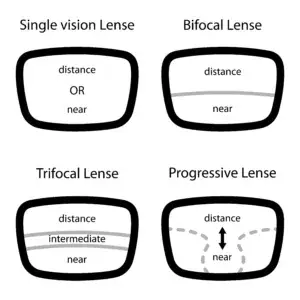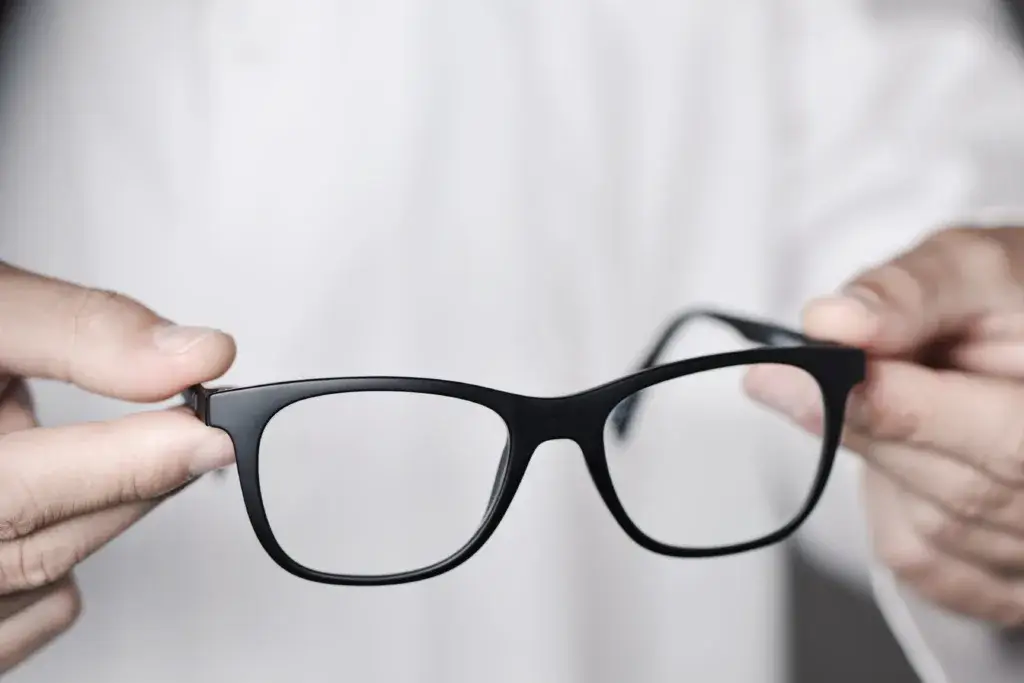If you don’t understand the difference between progressive and transition lenses, you’re not alone. Both types of lenses accomplish two things at once, making your glasses multi-functional. But while one type of lens helps you see clearly at different distances, the other allows you to see in different light settings. If you’re in the market for a new pair of glasses, we can help you determine which lenses are the best match for your needs.
The Difference Between Progressive and Transition Lenses
If we’re going to explore the difference between progressive and transition lenses, we should start by defining these two forms of corrective eyewear. Let’s dig into the basics.
Progressive Lenses
Progressive lenses are designed for people who suffer from presbyopia, a vision condition in which the crystalline lens loses flexibility, making it difficult to focus on close objects. They offer multiple correction values in one lens, allowing you to see both close-up and faraway objects clearly. Unlike bifocal lenses, which have a visible line between the distance portion of the lenses and the reading portion of the lenses, progressive lenses gradually shift from distance vision to near vision without a distinct separation.
Use the diagram to the right to learn how progressive lenses compare with other common types, including single-vision lenses, bifocal lenses, and trifocal lenses. As you can see, the top of the lens is used for distance, and the bottom center of the lens is used for near objects. The portion in between changes gradually and allows you to look at intermediate objects. The sides are blurry by design, so expect blurred peripheral vision.
single-vision lenses, bifocal lenses, and trifocal lenses. As you can see, the top of the lens is used for distance, and the bottom center of the lens is used for near objects. The portion in between changes gradually and allows you to look at intermediate objects. The sides are blurry by design, so expect blurred peripheral vision.
Progressive lenses are most commonly used by people over the age of 40, as older adults are more likely to have a combination of nearsightedness and farsightedness. Keep in mind that at first, your eyes and brain might struggle to adjust to the different fields of vision. If you give it time and train yourself to look through the correct section of the lens, you’ll find the lenses more comfortable.
Curious how progressives compare with bifocals? Check out our blog post The Difference Between Progressives and Bifocals.
Transition Lenses
Transition lenses combine typical eyeglasses and sunglasses. They feature light-sensitive or photochromic lenses, which change from clear to tinted when exposed to sunlight. So when you’re indoors, the lenses will be clear; when you step outside, the lenses will automatically become tinted to protect your eyes from the sun. This means you won’t need to switch between your typical glasses and prescription sunglasses. You can wear a single pair of glasses and not worry about carrying around the other type.
Keep in mind that the transition isn’t instant. You may need to wait a few minutes for your lenses to fully darken or lighten. In addition, because they’re sensitive to light, any exposure to UV rays will darken transition lenses. Even on a cloudy day, your glasses may darken. And in certain circumstances, your glasses may fail to darken even though you’re squinting. For example, if your car windshield is designed to block UV rays, your transition lenses may not darken much.
Finally, note that the photochromic coating will wear off eventually, so you will need to replace your glasses every few years.
To learn more, check out our blog post Pros and Cons of Transition Lenses.
So, What’s the Difference?
While both of these lenses are versatile and eliminate the need to carry around multiple pairs of glasses for different purposes, they accomplish very different things. Progressive lenses allow you to see at multiple distances, so you won’t need to carry around a pair of reading glasses. Transition lenses allow you to see in different light environments, so you won’t need to carry around a pair of sunglasses.
Ultimately, if you’re deciding between these two products, your choice will likely come down to your personal needs, preferences, and habits. But also, you don’t necessarily need to choose between them! Progressive lenses are also available as transition lenses, giving you the ultimate all-in-one pair of glasses.
_____
Are you looking for an optometrist in southwest Missouri? Visit one of our experienced optometrists at Heffington’s. Since 1975, the Heffington family has been assisting the Springfield community with top-quality eye care and affordable eyeglasses and contacts. One of the unique features of our family-owned business is that we manufacture lenses at our own laboratory, giving us total control over the service and pricing, and we’re happy to pass our savings on to you. To learn more about our products and services, please get in touch with us online, send an e-mail to asktheexperts@heffingtons.com, or give us a call at 417-869-3937 (Optiland location) or 417-882-3937 (House of Vision location). We look forward to hearing from you!

